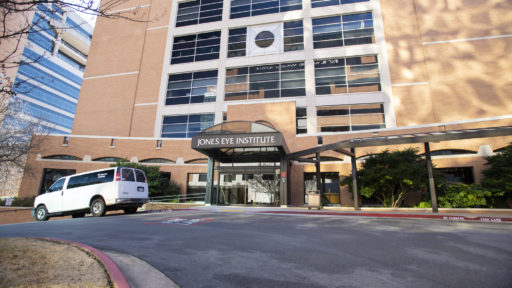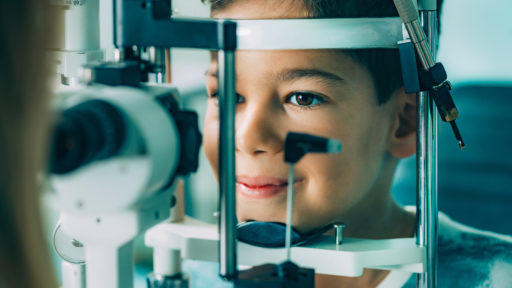The surface of your eye can be affected and damaged in a number of ways, including chemical injuries, hereditary conditions, new tissue growths, infections and blunt force trauma, leading vision impairment or loss.
In some cases, a corneal transplant may be the only hope for restored vision. UAMS is renowned for this service. When the cornea is removed and replaced with healthy donor tissue, it comes from the on-site Lions Eye Bank and Laboratory, which serves the entire state and is one of the most heavily supported in the nation.
About Corneal Transplantation Surgery
Corneal transplantation is a surgery to replace a cornea that is damaged. The cornea is the eye’s outermost layer. It is a clear, strong layer on the front of your eye and helps protect your eye from germs and infections. Your corneas also help control how light enters your eye; keeping it clear and healthy is necessary for good vision.
Why a corneal transplantation is needed
Certain health problems can damage the cornea, causing cloudiness, opacity and a distorted shape. These problems can harm your eyesight and in severe cases can even cause blindness. A corneal transplantation removes the damaged cornea and replaces it with one that is healthy and clear. Most people have good eyesight for many years after corneal transplantation.
Some conditions that can damage a cornea and require corneal transplantation are:
- Bulging of the cornea (keratoconus)
- Endothelial dysfunction (Fuch dystrophy)
- Swelling of the cornea (bullous keratopathy)
- Scarring of the cornea (from previous infection or injury)
- Buildup of substances on the cornea (corneal dystrophy)
- Inflammation of the cornea (keratitis)
- Complications after cataract surgery
Types of corneal transplantation
There are 3 main types of corneal transplantation:
- Penetrating keratoplasty. This is the most common type. A surgeon removes the central part of your damaged cornea and sews on a full thickness corneal graft.
- Descemet membrane (or endothelial) keratoplasty. This type of surgery is less common. Only the innermost damaged layer of the cornea is replaced.
- Anterior lamellar keratoplasty. This surgery replaces the anterior layer of the cornea.
This surgery ranges from partial thickness to full thickness and depends on how much of your cornea has been damaged. Our specialists provide personalized treatment and will tell you which type is best for you.
How corneal transplantation is done
At UAMS, your surgery will be done by a fellowship-trained cornea specialist. He or she will use a very fine thread (sutures) to sew the donor cornea in place. Alternatively, depending on what type of corneal transplant you require, an air bubble may be put in your eye to keep the new graft in place. This is used for endothelial transplants.
Risks of corneal transplantation
All procedures have risks. Risks of corneal transplantation are:
- New refractive errors (changes in vision) that need correcting with eyeglasses or contact lenses
- Infection of the cornea
- Worsening of glaucoma
- Bleeding in the eye
- Sore on the eye (ulcer or abscess)
- Blood vessels growing in the cornea caused by the sutures
- Detachment of the new cornea
- Clouding of the eye’s lens (cataract)
- Detachment of the retina
- Eye inflammation
- Failure of the surgery to fix your eyesight
Another serious risk is rejection of the donor cornea where your immune system may attack the new cornea. This can cause the transplant to fail. If this happens, you will likely need another corneal transplantation and a corneal surgeon trained in high-risk grafts may be involved in your care. To lower your risk for rejection, talk with your eye doctor about the risks and symptoms of rejection. Contact us if you have any of these symptoms. Early treatment may prevent loss of your eyesight.
Your risks may differ based on your age, your overall health and the cause of your damaged cornea. Our team will talk to you about which risks apply most to you and if you are a good candidate for this surgery.


